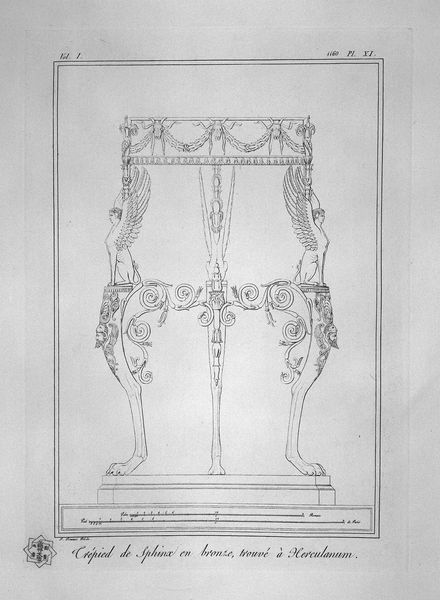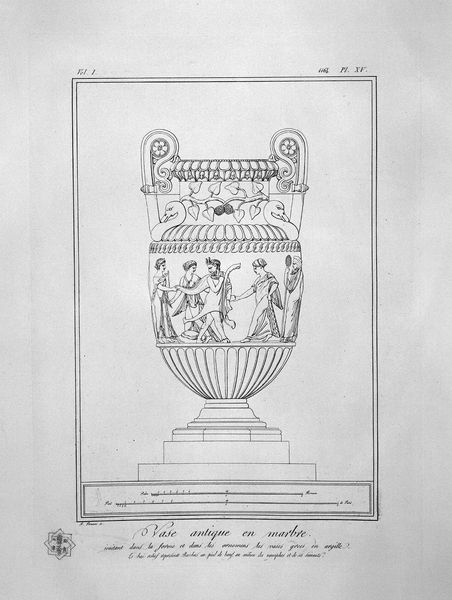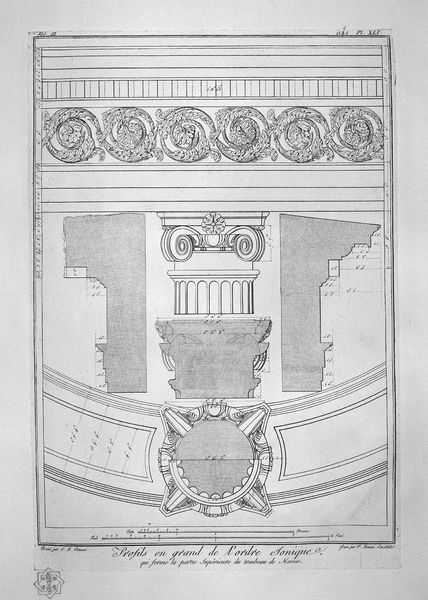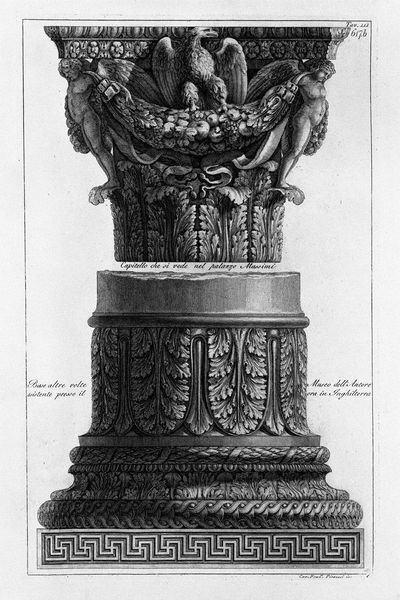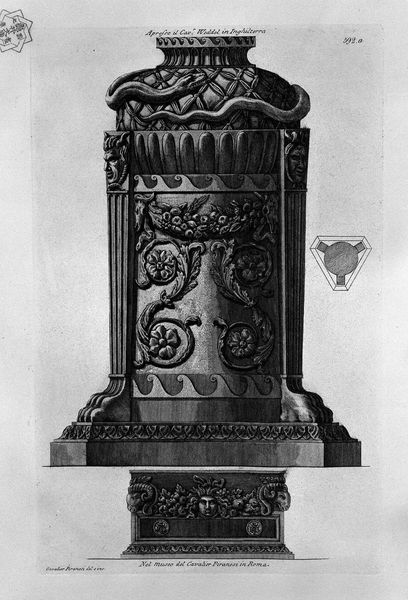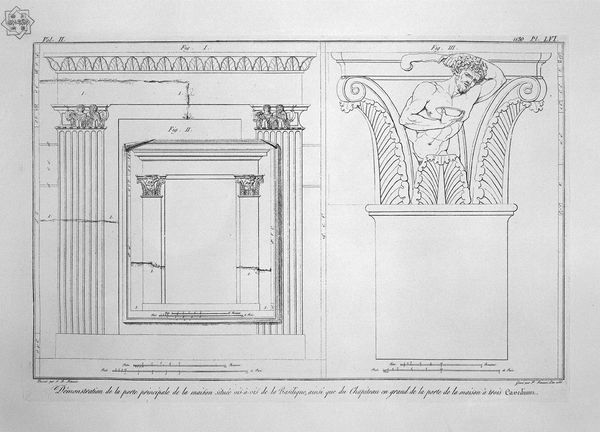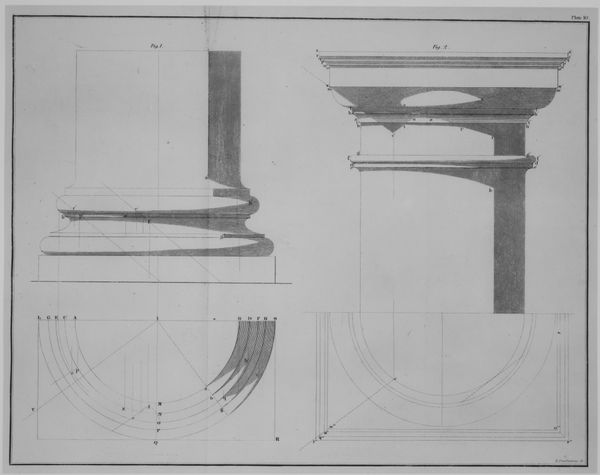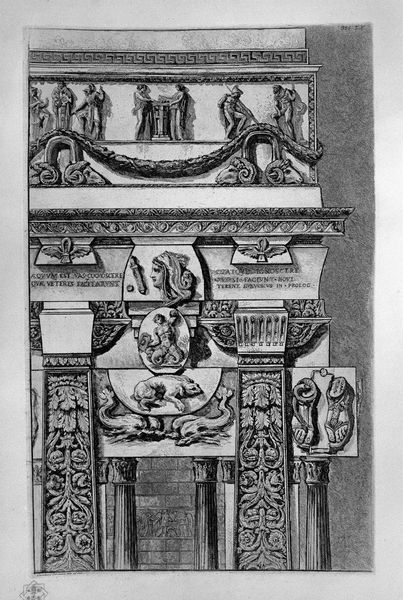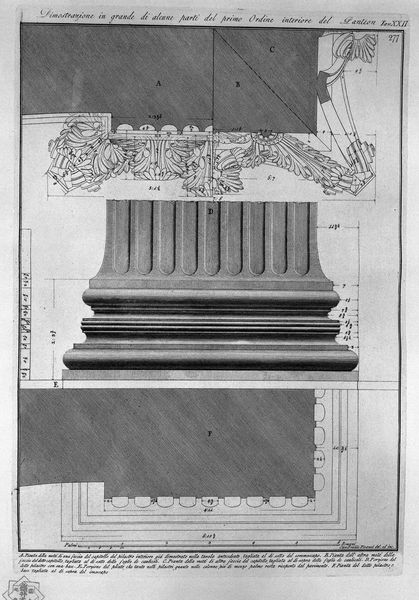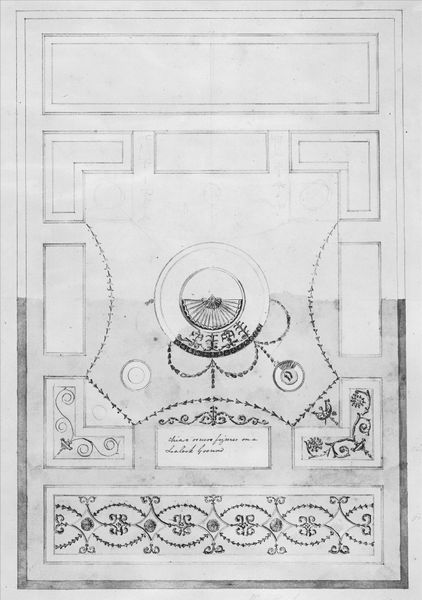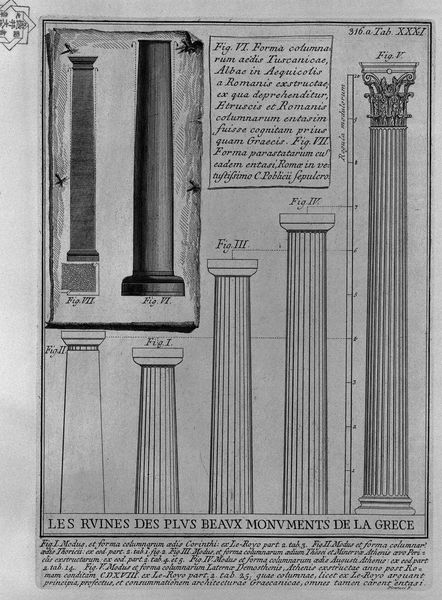
drawing, bronze, pencil
#
portrait
#
drawing
#
statue
#
pencil sketch
#
greek-and-roman-art
#
bronze
#
figuration
#
text
#
ancient-mediterranean
#
pencil
#
men
#
line
#
history-painting
Copyright: Public domain
Editor: So, here we have Giovanni Battista Piranesi’s drawing of a bronze tripod with satyrs, supposedly found in Pompeii. The rendering is incredibly detailed, but something about the satyrs holding up that basin seems a bit…unstable. What’s your take on this, Professor? Curator: What I see is Piranesi engaging in the rediscovery and re-imagining of antiquity that gripped 18th-century Europe. The drawing itself becomes a tool, almost a scientific one, for documenting and classifying newly unearthed artifacts. But beyond mere documentation, Piranesi is also *interpreting* antiquity for his contemporary audience. Editor: Interpreting, how so? Curator: Think about the social context: the Enlightenment's fascination with reason and order coupled with the thrill of unearthing a lost civilization. Piranesi's meticulous lines, the almost architectural precision in rendering the tripod, he's not just showing us an object, he’s presenting a vision of a classical past that is both powerful and knowable. He is constructing a visual history. Consider, also, who would have viewed such a piece; it was likely purchased and consumed by wealthy Grand Tourists, and the presence of text situates this object, adding scholarly credibility and helping define what constituted ‘high culture.’ Editor: It's interesting to think about how the act of drawing transforms an object, like this tripod, into something that signifies more than just its original purpose. Curator: Precisely! And that transformation is deeply embedded in the cultural and social forces of the time. The art becomes a vehicle for constructing ideas about the past, its relation to the present, and how societies define value and taste. What seemed "unstable" to you aesthetically could be argued to visually embody a larger narrative of interpretation and re-contextualization. Editor: That reframes everything. Thanks, Professor. I see this less as a drawing of a tripod and more as a statement on how we view history.
Comments
No comments
Be the first to comment and join the conversation on the ultimate creative platform.
